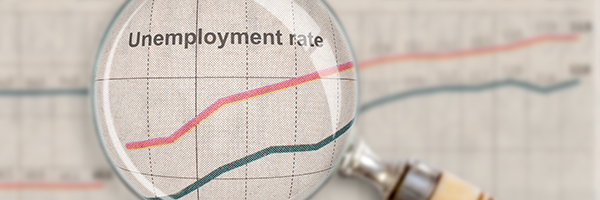Short Term

August 5, 2024 | Daily JAM, Morning Briefing, Short Term |
Yeah, I know you can read a calendar, but take a moment to think about how the extraordinary August economic news vacuum feeds into the current market plunge. No Federal Reserve meeting in August so no interest rate cut until September 18. Which also means no new economic projections from the Fed on GDP growth or the likelihood of recession. No Fed Speak at all, really, with reassurance that the economy is slowing but not headed for recession, until the August 22-24 central bank gab fest in Jackson Hole. No significant earnings news–big enough to affect sentiment at least–until Nvidia’s (NVDA) earnings on August 28.

August 2, 2024 | Daily JAM, Morning Briefing, Short Term |
The U.S.economy added only 114,000 jobs in July. Economists surveyed by Bloomberg had projected an increase of 175,000 jobs in the month. The unemployment rate unexpectedly climbed by 0.2 percentage points to 4.3% in July, exceeding all 69 estimates by economists. Average hourly earnings rose 0.2% on a monthly basis, also less than forecast, and on an annual rate increased by 3.6%–the least since May 2021. The jump in the unemployment rate triggered the Sahm Rule. Coined by former Federal Reserve economist Claudia Sahm, the rule says that when the average jobless rate over three months is 0.5 percentage point above the 12-month low, a recession is coming. And that’s exactly where we are now. “We’re not headed in a good direction,” Sahm said on Bloomberg Radio Friday. It’s fair to say the stocks weren’t happy on Friday.

July 14, 2024 | Daily JAM, Short Term |
.Watch to see if we finally get that long-awaited, long-predicted, and never quite arriving rotation out of technology stocks (and especially those BIG tech stocks) and into smaller capitalization stocks, or consumer stocks or value stocks.

July 5, 2024 | Daily JAM, Morning Briefing, Short Term |
The U.S. economy added 206,000 jobs in June, the Bureau of Labor Statistics reported today, July 5. That was above the median forecast of 190,000 new jobs in a Bloomberg survey of economists. But even though the June number came in above expectations, the overall message in the data was that the labor market is slowing. The Bureau of Labor Statistics revised job growth in the prior two months down by 111,000. Average monthly job growth over the last three months slowed to the lowest rate since the start of 2021. And the unemployment rate rose to 4.1%

July 1, 2024 | Daily JAM, Short Term |
There won’t be any stock market reaction to the June jobs report due on Friday That’s because the market closes early on July 3 and stays closed for Friday’s Fourth of July holiday. And not because the report isn’t important as the Federal Reserve continues its search for evidence that the labor market is cooling enough to send inflammation down to the bank’s 2% target. The June report is expected to show that the economy added 188,000 jobs in June.

July 1, 2024 | Daily JAM, Morning Briefing, Short Term |
Wall Street strategists at influential investment giants are starting to recommend buying inflation hedges for 2025.
That means, at the moment, buying at the short-term end of the Treasury market–like 3-month to 12-month bills–and selling at the long-end–like 10-year notes.
June 27, 2024 | Daily JAM, Morning Briefing, Short Term |
Micron Technology (MU) shares shares are down another 7.12% today, Thursday, June 27, as of the close in New York time. That’s after the stock fell 6.5% in after hours trading yesterday. The problem wasn’t the company’s third-quarter earnings report after the market close yesterday. For the period ended May 30, Micron earned an adjusted 62 cents a share. Analysts had expected the company to earn 53 cent a share. Revenue was up 82% year-over-year to $6.81 billion. Wall Street was looking for $6.67 billon in revenue. But the very solid beat for the quarter turned out not to matter as far as market reaction was concerned. The problem was guidance.

June 17, 2024 | Daily JAM, Morning Briefing, Short Term |
On Friday, June 14, Goldman Sachs upped its year-end target for the Standard & Poor’s 500 to 5,600 points from 5,200. The idea closed at 5473 on Monday, June 17, for the 30th record high of 2024. Goldman’s forecast puts the investment company at the same expected price level as UBS Investment Bank and BMO Capital Markets. They’r talking about a roughly 3% gain from here through the end of the year. Three points to consider about the forecast.

June 12, 2024 | Daily JAM, Morning Briefing, Short Term |
However, as all dedicated inflation watchers know, the Federal Reserve watches the core inflation rate and not the all-items rate. That index, which excludes more volatile food and energy prices, rose 0.2% month over month in May, after rising 0.3% month over month in April. The core index rose at a 3.4% rate over the last 12 months. While the dip in core inflation is surely encouraging to the Federal Reserve as it fights to get stubborn inflation down to the central bank’s target 2% rate, today’s data show a continued problem the housing prices. The shelter index–the stand-n for housing prices in this index–increased at a 5.4% annual rate in May. That accounted for over two-thirds of the total 12-month increase in inflation.

June 7, 2024 | Daily JAM, Short Term |
After today’s surprisingly strong May jobs report, the odds for an initial interest rate cut from the Fed at its September 18 meeting weakened considerably

June 7, 2024 | Daily JAM, Morning Briefing, Short Term |
Employers added 272,000 jobs in May, the Bureau of Labor Statistics reported this morning. That number was well above the 185,000n projected by economists and even higher above the 175,000 in the April report. The financial markets were disappointed with the news since it pushed out the schedule for an initial interest rate cut from the Federal Reserve.A cut a the July 31 Fed meting has now been priced out by the market. The Standard & Poor’s 500 fell 0.14% today and the NASDAQ Composite dropped 0.23%

May 26, 2024 | Daily JAM, Short Term |
I expect Wall Street’s last rate cut bulls to get gradually less bullish. With means, expect to see interest rates (and Treasury yields) continue to rise, and the consensus on when the first cut in rates from the Federal Reserve to continue to move later in 2024. This past week economists at Goldman Sachs threw in the towel on their projections for a July interest rate cut by the Federal Reserve. The investment company moved its forecast for an initial cut to September.“Earlier this week, we noted that comments from Fed officials suggested that a July cut would likely require not just better inflation numbers but also meaningful signs of softness in the activity or labor market data,” the economists wrote in a note.Goldman Sachs had been one of the last banks on Wall Street betting the Fed would start lowering interest rates in July. JPMorgan Chase and Citigroup are among the few holdouts still forecasting a July move. Goldman is still predicting two interest rate cuts in 2024. The swaps market now fully prices in a December cut. The odds of a second reduction in 2024 stand at less than 30%, compared with about 70% last week. At the end of 2023, the first Fed cut was expected as early as March.










